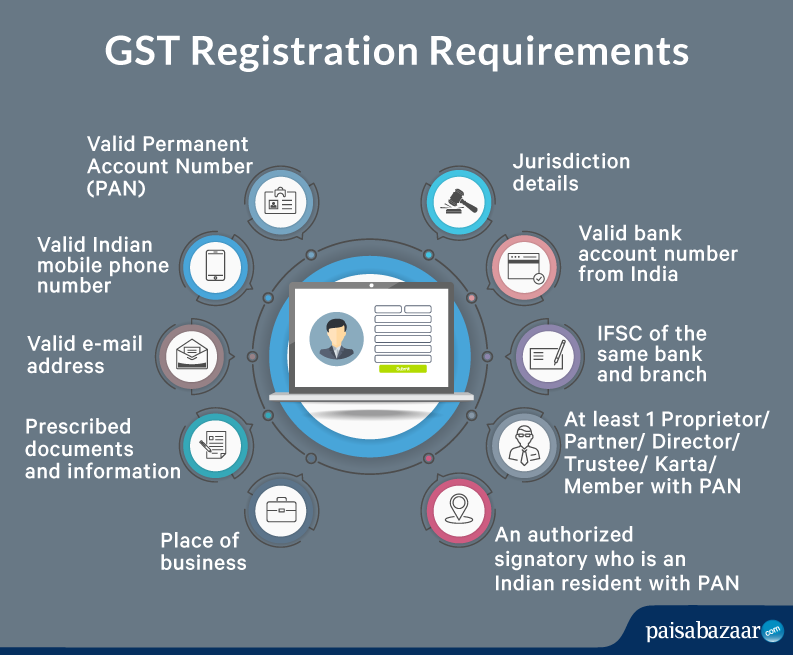The Ultimate Guide to Streamlining the GST Registration Process and Needs for Small Company Owners

Recognizing GST Fundamentals
To understand the fundamentals of the Item and Solutions Tax Obligation (GST) system, little company proprietors need to first understand its underlying effects and principles. Under the GST regime, businesses are called for to accumulate and register tax obligation on behalf of the government, ensuring openness and compliance.
Among the essential concepts of GST is input tax credit rating, which permits companies to claim credit rating for tax obligations paid on their purchases. This system prevents the cascading result of taxes and advertises effectiveness in the tax obligation system. Additionally, GST is a destination-based tax, suggesting that the tax is imposed at the factor of intake instead than the point of beginning. This ensures fair circulation of tax revenue amongst states based on where the solutions or goods are consumed. Comprehending these basic principles is important for local business owners to navigate the complexities of the GST system and make sure conformity with the law.
Eligibility Requirements for Enrollment
Having actually developed a fundamental understanding of GST principles, little organization proprietors have to currently fulfill details qualification standards to wage the registration process. In India, entities participated in the supply of goods or solutions with a yearly accumulation turn over going beyond Rs. 40 lakhs (Rs. 10 lakhs for unique group states) are called for to register for GST. Furthermore, certain companies such as those involved in inter-state supply of goods, laid-back taxable persons, and those required to pay tax obligation under the reverse cost system should register for GST irrespective of their turn over. Organizations that were signed up under the previous tax regime (BARREL, service tax obligation, etc) are likewise mandated to sign up under GST. Farming businesses that just supply generate out of main manufacturing are excluded from GST registration. It is crucial for company owner to very carefully evaluate their qualification based on these standards to make certain compliance with the regulation and prevent any charges for non-compliance.
Records Required for GST Registration

Simplified Registration Refine Actions
Complying with the collection and verification of the requisite records, the enrollment process look at here now for GST can be browsed through a collection of simplified steps designed to assist in efficient conformity for tiny service owners. The primary step involves seeing the GST website and selecting the 'New Enrollment' option. Subsequently, the candidate should complete Component A of the GST REG-01 form with information such as PAN, mobile number, and e-mail address to get an OTP for confirmation. When the OTP is received and gotten in, a Short-term Referral Number (TRN) is produced for more procedures. The following step calls for completing Component B of the form with essential company information, submitting sustaining files, and finishing the verification procedure using DSC or EVC. Lastly, upon effective verification, an Application Recommendation Number (ARN) is released, showing the completion of the GST enrollment process. By following these simplified actions, small company proprietors can effectively register for GST and make sure compliance with tax laws.
Tips for Ensuring Compliance
To maintain regulatory adherence and operational integrity, persistent oversight and positive procedures are Singapore GST Registration pivotal in guaranteeing compliance with GST demands for little service owners. Little service proprietors have to remain updated with GST guidelines, submitting due dates, and any type of modifications in tax rates to prevent charges and maintain a good standing with tax authorities. Attending GST awareness workshops or training programs can enhance understanding and conformity with GST laws, inevitably profiting the service in the long run.
Conclusion
To conclude, tiny business proprietors have to recognize the fundamentals of GST, satisfy the eligibility criteria, gather needed papers, and follow the streamlined enrollment procedure steps to guarantee conformity. By streamlining the GST enrollment process and demands, small company proprietors can stay clear of fines and run their organizations efficiently within the legal structure - Singapore GST Registration. It is crucial for tiny service owners to remain certified and informed with GST laws to maintain an effective company operation
Little business proprietors seeking GST enrollment must ensure they gather and submit the needed files to finish the registration procedure efficiently. The papers required for GST enrollment generally include evidence of company enrollment or consolidation, FRYING PAN (Permanent Account Number) card of the organization entity, address and identification evidence of the promoters/partners/directors, photographs, address proof of the area of company, financial institution account statements or canceled cheques, and authorization types. Participating in GST understanding workshops or training programs can improve understanding and conformity with GST guidelines, inevitably profiting the service in the long run.
By simplifying the GST enrollment procedure and requirements, little service proprietors can avoid fines and run their companies smoothly within the lawful structure. It is essential for little organization owners to stay educated and certified with GST regulations to maintain a successful company procedure.